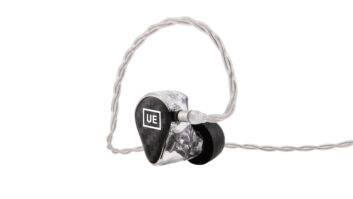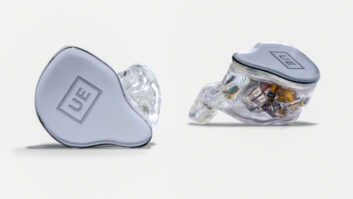
In Zen they say: If something is boring after two minutes, try it for four. If still boring, try if for eight, sixteen, thirty-two, and so on. Eventually one discovers that it is not boring at all but very interesting.”—John Cage, “Indeterminacy”
advertisement
The first listening assignment I give my students is to study a piece of music they hate, within a musical style they dislike. I explain that, as engineers, they need to understand how recorded music sounds in all of its manifestations because, at some point in their careers, they’re going to have to deal with what they consider to be “bad music” if they want to make a living. It doesn’t matter whether they plan to get into recording, mixing or mastering, they had better be prepared for the unknown.
To fulfill the assignment, I ask them to tell me when and where the piece was recorded, how the frequency spectrum is filled, what the overall ambience is like, and so forth. In other words, they have to listen beyond the music itself and hear what is physically going on.
That’s when the light bulb appears.
Suddenly, we’re talking room tone, instrument balances, vocal placement, dimensionality—basic mix aesthetics. The class begins to forget what they were listening to and learns what to listen for. By the end of the semester, they are geeking out about reverb in everything they hear, recognizing compression artifacts in their subtlest forms, and approaching sound—not just music—in an analytical way and enjoying the process.
This first exercise is meant to inform my students, who range from beginners to intermediate-level recordists, that they have a lot of listening to do before they can consider themselves professionals. It is also meant to refocus the questions that are usually asked starting with the first day of class: What mic should I buy? What’s the best interface? First, you have to know what you’re listening for, and then you can figure out what you need in order to hear it. (And you’d better save up your money, because the solutions aren’t cheap!)
When I introduce the assignment, I explain that the top engineers in the business often work across a wide variety of musical genres. That surprises most students because they, themselves, often only listen to a few specific types of music. The irony, of course, is that despite having instant access over the Web to nearly every recorded piece of music ever made, the average listener’s tastes are becoming increasingly Balkanized.
Personalized digital delivery has made it possible to completely shut out music we don’t like, to the point where we are increasingly ignorant of the expanding culture around us. But that’s where the money is in our profession—gigs that are the result of an ever-diversifying media. Anyone interested in being a long-term professional in the recording business must have a global awareness of music. A good model for this is the career of Quincy Jones. Because most of my students grew up listening to downloaded files, devoid of nearly all production information, they’re only vaguely aware of the various jobs involved in modern music making—producer, arranger, mix engineer, mastering engineer (and my favorite from Tom Waits’ Bone Machine, “Musical Security Guard”). These people are just as important as the artist in terms of making a successful recording. I tell them to pay attention to the men and women behind the scenes of their favorite releases, and very soon they’ll begin to see some of the same names reappearing. Follow their careers, because they will most certainly outlast the talent.
That initial exercise is just the icebreaker for the semester. In the next level, the students are required to listen to a handful of commercials on network television without watching the screen, in order to concentrate solely on the sound. I ask them to describe what they hear technically (the sound of the bass drum, reverb on the voice, where elements sit in the mix), emotionally and professionally (What was the ad agency trying to do? What demographic is it targeted toward?). Answering these types of questions puts additional pieces into place for the budding music/recording professional. And it not only serves as a listening exercise, but it also hones the student’s communication skills. For example, when the client says, “The mix needs to feel more orange,” a pro should be able to intuit as best he or she can what the client is really asking for, based on all of the cues of the moment. The only way to acquire these chops is through a broad diet of concentrated listening.
Recently, I heard a film critic describe the difficulty of judging movies after being inundated with trailers and PR before actually seeing the work; his expectations and biases where in full force before he even stepped into a theater. He then described the joy of attending a film festival, such as Cannes, where he sits through more films than he can keep track of, which results in having no preconceived notion of what many of them are about. For him, that was the source of greatest discovery—experiencing a work of art with “beginners mind.” Therein lies the source of true learning for all of us. To approach every challenge as an opportunity, fully open to the experiences before us so that we can make the most of what they teach us.






